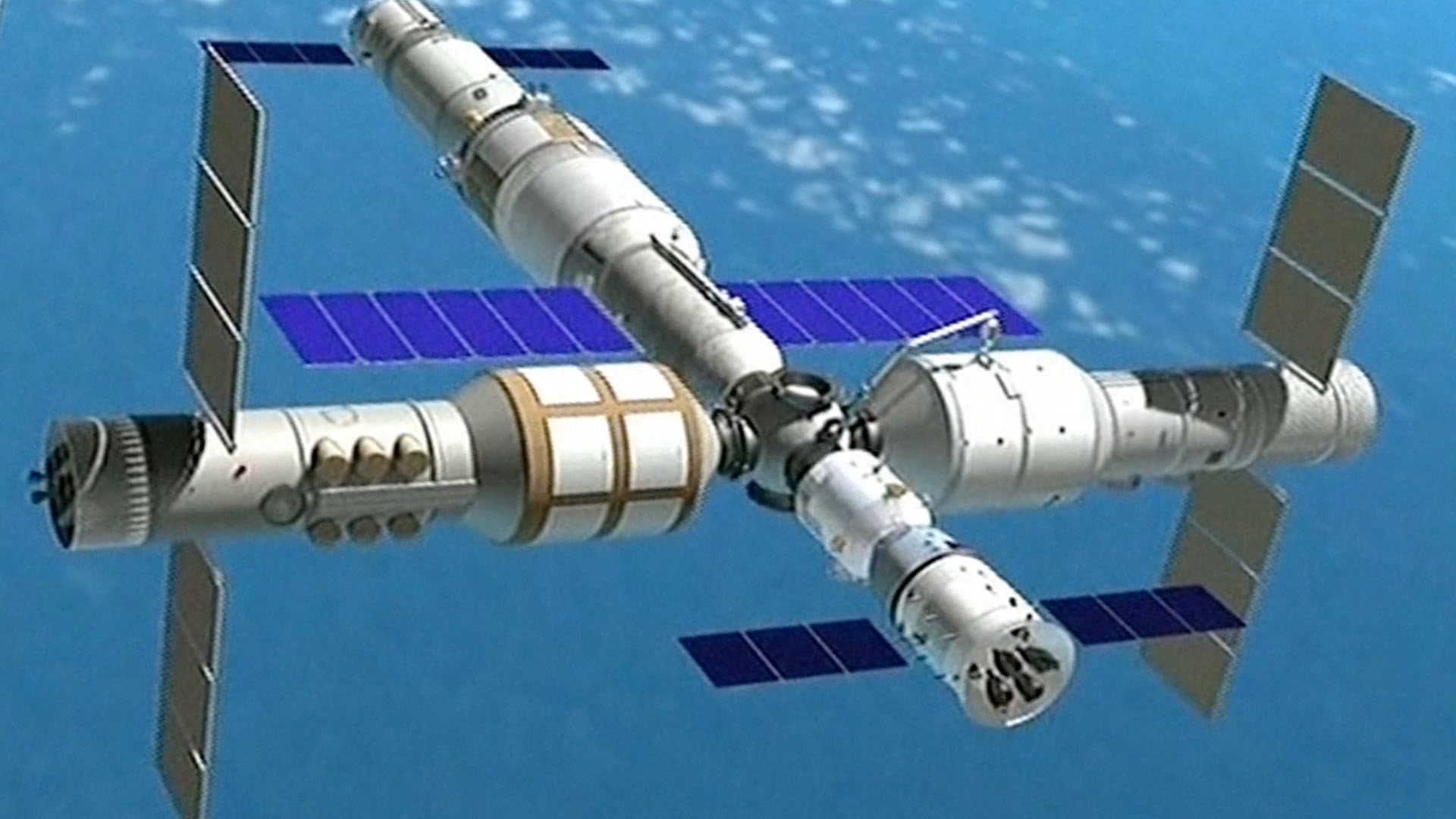
Space
15:29, 06-Mar-2018
Chief designer reveals more about China's 2022 space station
By Gong Zhe

China's space station, set to be completed in 2022, will contain a core and two laboratory modules, the prototypes of which are currently being built.
This was disclosed on Sunday by Zhou Jianping, the chief designer of China's manned space program, on the sidelines of the country’s ongoing Two Sessions.
Zhou is also a member of the 13th Chinese People's Political Consultative Conference (CPPCC), China's top political advisory body.
The modules, each weighing about 20 tons, will form the shape of a “T.” Inside those modules will be research facilities for studying space life and materials, microgravity, as well as basic physics and astronomy, Zhou said.
The core module has five sockets, including one for cargo ships, two for manned spacecraft, and two for the space lab modules mentioned above.
"We plan to launch a testing core module around 2020 so as to test the key technologies for our space station. After that test, we will launch the lab module 1 and the lab module 2 to dock with the core module," said Zhou.
"We also have an important scientific facility – the optical module. It will carry a space telescope that has a 2-meter diameter lens with the same level of image resolution as the well-known Hubble telescope but has a field of view 300 times that of the Hubble. The optical module is being designed and made," Zhou added.
With such a wide field of view, the space telescope could survey 40 percent of the cosmos in ten years.
The International Space Station (ISS) is currently the only space station in Earth’s orbit and is set to retire in 2024.
If China successfully establishes its own space station according to schedule, it'll be the only one in operation by 2024.

SITEMAP
Copyright © 2018 CGTN. Beijing ICP prepared NO.16065310-3
Copyright © 2018 CGTN. Beijing ICP prepared NO.16065310-3